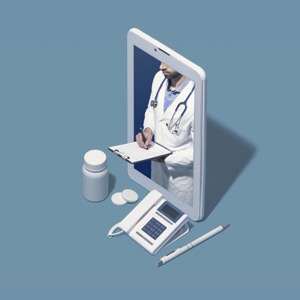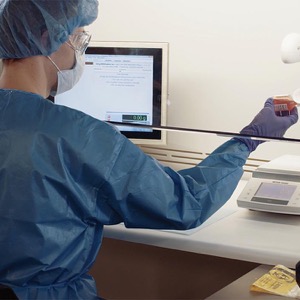By Gina Shaw
The Drug Enforcement Administration (DEA) held two public listening sessions on Sept. 12 and 13 to explore the possibility of creating special registration that would permit providers to prescribe medically necessary drugs by telehealth. The registration would represent a potential long-term expansion of a policy that began during the federal COVID-19 Public Health Emergency (PHE). The DEA is “open to considering” such a policy, the agency said in a statement announcing the listening sessions.

During the PHE, the DEA granted temporary exceptions to existing regulations, allowing the prescribing of controlled substances via telemedicine encounters, even when the prescribing practitioner had not conducted an in-person medical evaluation of the patient, “in order to prevent lapses in care.”
A proposed rule from the DEA released on March 1 would have significantly modified this policy, allowing for the telemedicine prescription of nonnarcotic Schedule III to V controlled substances with an initial 30-day supply limit and the requirement of an in-person evaluation with the prescribing practitioner for any further prescriptions. A similar policy was proposed for buprenorphine prescribing in May, after a flood of responses—among the highest number of public comments received on a notice of proposed rulemaking in the DEA’s history, the agency reported. The DEA extended its existing policies on telehealth prescribing of these substances until at least November 2023.
A significant majority of the comments the DEA received “expressed concern, with respect to at least some controlled substances, that the proposed regulations placed limitations on the supply of controlled substances that could be prescribed via telemedicine prior to an in-person medical evaluation,” noted the agency in announcing the listening sessions. “DEA is open to considering—for some controlled substances—implementation of a separate Special Registration for telemedicine prescribing for patients without requiring the patient to ever have had an in-person medical evaluation at all.”
The American Telehealth Association (ATA) praised the move. “The ATA and ATA Action have the highest praise for the Administration and the DEA for their responsiveness to the 38,000-plus public comments they received expressing concern over proposed regulations that would severely limit remote prescribing of medically necessary controlled substances," said Kyle Zebley, the senior vice president of public policy for the ATA and executive director of ATA Action, in a statement.
The DEA suggested that its proposal might actually improve accountability for prescribing of controlled substances based on the “increased data collection and visibility into prescription practices” resulting from the policy. The plan has the added benefit of ensuring patient safety and preventing diversion “in near-real-time,” the agency noted.
The listening sessions included dozens of speakers from a variety of health professional organizations and health systems. Among them was Helen Hughes, MD, an assistant professor of pediatrics at the Johns Hopkins University School of Medicine, in Baltimore, and the medical director for the office of telemedicine at Johns Hopkins Medicine.
“There are many clinical situations which require telemedicine prescription of controlled substances without an in-person visit,” said Dr. Hughes, who noted that Johns Hopkins’ outpatient telehealth visits now represent about 13% of its overall outpatient volume, a rate that has been consistent for at least 12 months. “Telehealth is used across all specialties, but it has been particularly impactful to increase access to mental health care,” she continued. “Approximately 40% of our provider–patient relationships in psychiatry have been maintained exclusively through telemedicine over the past three years, with no in-person visits.”
Dr. Hughes recommended that the DEA remove any requirement for an in-person visit prior to the prescribing of controlled substances. “Instead, they should develop a streamlined telemedicine special registration that would allow the DEA to perform the centralized recordkeeping, prescription tracking and data monitoring it needs to police prescribing practices and prevent drug diversion and abuse.”
Patients with certain chronic diseases that are treated with drugs on the controlled substance schedule may not always have the ability to be seen in person by a clinician, Bruce Cohen, MD, a pediatric neurologist and the chair of the NeuroDevelopmental Science Center at Akron Children’s Hospital, in Ohio, told Pharmacy Technology Report. He noted that neurologists use several medications for epilepsy that are controlled substances, including benzodiazepines, most of which are Schedule IV, and pregabalin (Lyrica, Pfizer), which is Schedule V.
“For example, I have two patients who are very disabled; one is on a ventilator. I prescribe controlled substances for one for a severe movement disorder that is a consequence of a brain injury, while the other has intractable epilepsy,” he said. “I have frequent telehealth visits with these patients and know them well, and for them to have to come to the hospital for the sole purpose of me laying eyes on their physical body as opposed to through a camera just doesn’t make any sense.”
Dr. Cohen reported no relevant financial disclosures.




